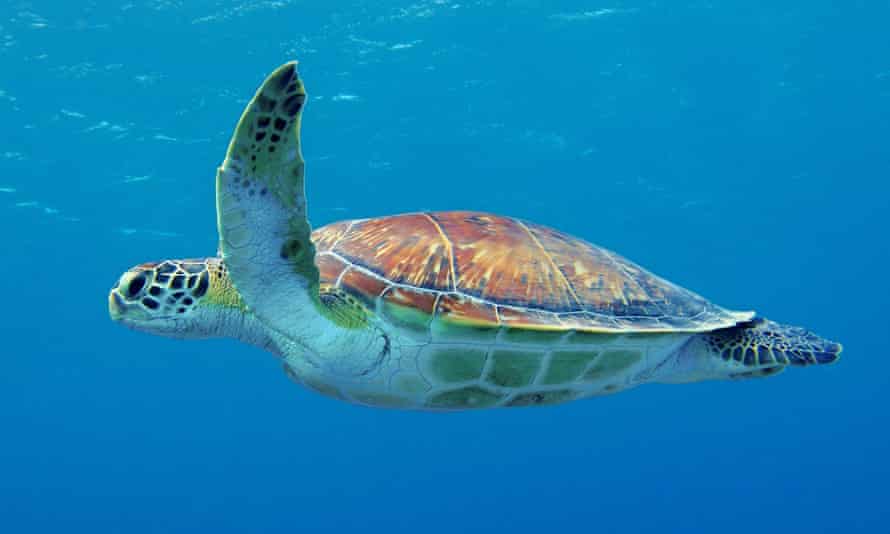Evolutionary ‘trap’ leading young sea turtles to ingest plastic, study says
Researchers find fragments in innards of species that have adapted to develop in open ocean, which has highly polluted areas

Young marine turtles are swallowing large quantities of plastic, with ocean pollution changing habitats that were once ideal for their development into a risk, researchers have found.
The impact of plastic on wildlife is a growing area of research, and studies have revealed harrowing cases of marine animals sustaining injuries or dying after ingesting such material or becoming entangled in it.
One study estimated that between 4.8m and 12.7m tonnes of plastic entered the world’s oceans in 2010 alone, while a recent review by the Australian government’s science agency, CSIRO, found that animals across 80 different species, including turtles, were being killed by ingesting plastic.
Now researchers studying young sea turtles, ranging from hatchlings to those with shells under 50cm in size, say the presence of plastic in the world’s oceans means evolutionary adaptations that once helped the creatures thrive are putting them at risk.
Writing in the journal Frontiers in Marine Science, researchers in the UK and Australia report how they looked for the presence of plastic in the innards of 121 sea turtles of five species – green, loggerhead, olive ridley, hawksbill and flatback. The turtles were from the Indian Ocean off the west coast of Australia, and the Pacific Ocean off the east coast of Australia, and were either stranded or caught unintentionally.
The results reveal that specimens of all the species – except hawksbill turtles, of which only seven specimens were examined – were found to have plastic fragments in their gastrointestinal tract. The proportion affected was higher among turtles from the Pacific Ocean.
Of the green turtles from those waters, 83% were found to contain plastic – compared with 9% from the Indian Ocean – with the material accounting for up to 0.9% of their total body mass. One green turtle specimen from the Pacific Ocean was found to contain 144 pieces of ingested plastic more than 1mm in size.
The team note that most of the plastic found inside the turtles was polyethylene or polypropylene, but it was not possible to determine the specific sources of these widely used polymers.
Dr Emily Duncan, of the Centre for Ecology and Conservation on Exeter’s Penryn Campus in Cornwall and a co-author of the study, said young turtles had evolved to develop in the open ocean, where predators are relatively scarce.
“However, our results suggest that this evolved behaviour now leads them into a ‘trap’ – bringing them into highly polluted areas such as the Great Pacific Garbage Patch,” she said in a statement.
Duncan added that it was not yet clear what effects swallowing plastic has on the young creatures, but warned that it could be detrimental to population levels. “Juvenile sea turtles generally have no specialised diet – they eat anything, and our study suggests this includes plastic,” Duncan said.
Mark Wright, director of science at the World Wide Fund for Nature, who was not part of the study, said six out of seven species of marine turtle were threatened with extinction, and plastic pollution is yet another of the perils they face.
“Relatively few young marine turtles survive their first year, so it is imperative that we reduce threats to ensure the long-term survival of these extraordinary species,” he said.
